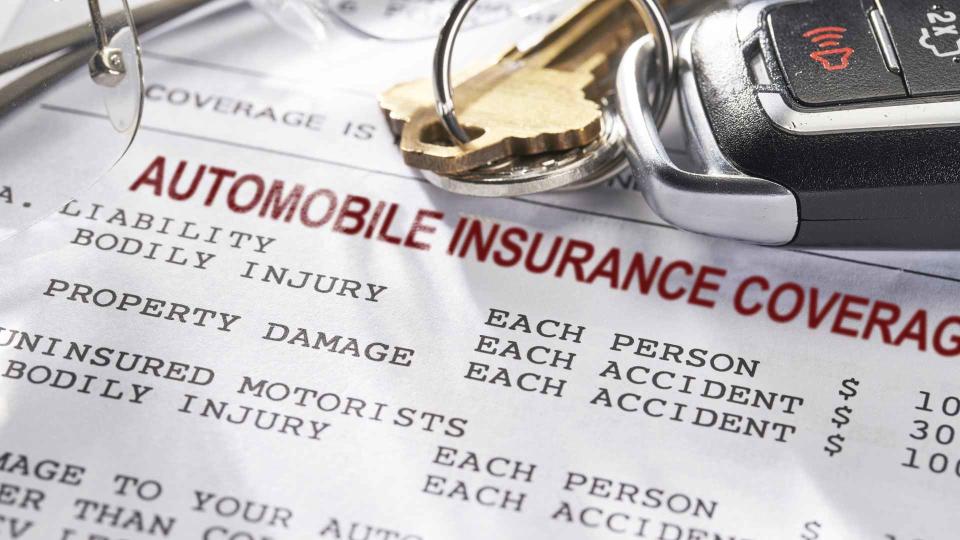5 Things You Must Do When Your Car Insurance Rises Over 20%

As the average transaction price of a new vehicle continues to slowly decrease, insurance premiums are staggeringly high. Car insurance rates are up 22.6% for the 12 months ended in April and have risen slightly over the past few months, according to Consumer Price Index data released last month. This increase comes due, in part, to increases in the price of vehicle repairs and the frequency of car accidents and claims, per CNN.
Check Out: 7 Reliable Car Brands the Middle Class Should Consider To Save Money in the Long Run
Read Next: How To Get $340 Per Year in Cash Back on Gas and Other Things You Already Buy
It’s a frustrating fact of life, but as Progressive pointed out, your insurance rates can increase due to no cause of your own, influenced by things like the rising number of claims in the area in which you live. While there exists a wide variation of insurance rates from state to state, most Americans are having to rethink their insurance situation when the time comes to renew.
There’s no loyalty in the insurance business. Although longevity with a company is factored, pretty much any life change or driving record event — buying a new car, having outstanding tickets, moving to a higher crime area, suffering a drop in your credit score — will spark a premium hike.
There are tons of ways an everyday driver can cut costs, but if you’re facing a steep increase in your car insurance rate, here’s five things you need to look at immediately.
1. Shop Around for an Affordable Rate
If you’re looking for car insurance and want to find the lowest premium, be sure to compare car insurance quotes from several providers. In fact, you should shop around every couple of years regardless of what you’re paying at the time. There’s no reason to stay with a provider if you can pay less elsewhere. Drivers should expect to be aggressive and cast a wider net when shopping for insurance this year.
Learn More: 5 States With Tough Highway Patrol and Pricey Tickets
2. Seek Out an Independent Agent
Independent agents collaborate with a variety of insurance providers, as opposed to agents who represent just one insurer (such as State Farm or Allstate). So, they are able to discover the ideal balance between cost and coverage for you. The cost of insurance is determined by hundreds of factors and varies widely between providers. An independent agent can help you navigate these factors and confirm your eligibility for premium discounts.
3. Choose a Higher Deductible
Although it could be tempting to go with the lowest available deductible, there are several advantages to choosing $1,000 comprehensive and collision coverage over, say, $250 or $500 coverage. First, you save money right away on a cheaper premium. You also might be discouraged from filing minor claims when you have higher deductibles. This means that paying for a minor claim out of pocket, like a damaged windshield, for example, rather than submitting it to your insurance carrier, which may end up being cheaper.
4. Take a Defensive Driving Course
There’s a very good possibility of getting a reduced insurance rate if you’re a driver who has completed a defensive driving course in your state. According to I Drive Safely, 34 states offer discounts of up to 10% for course completion. “I always recommend taking defensive driving every year,” said Preston Cherry, founder of Concurrent Financial Planning. “The discount is worth it.”
5. Assess Your Current Insurance Plan
If an insurance increase is in your future and money is already tight, you should consider changing your coverage. Your policy might not fit your situation anymore. However, if you’re thinking of dropping your coverage to the minimum required by your state, many experts believe that carrying a bare minimum policy is a risky way to drive. Some clients, “go in and just start slashing” policy line items and end up underinsured, said Marcus Miller, a Mainstay Capital financial planner based in Jacksonville, Florida.
Instead, try to see if you qualify for one of the many discounts insurance providers offer (for seniors, good students, military members, etc.). You may also find different premiums depending on the frequency of your driving, such as usage-based and pay-per-mile insurance programs.
More From GOBankingRates
This article originally appeared on GOBankingRates.com: 5 Things You Must Do When Your Car Insurance Rises Over 20%

 Yahoo Finance
Yahoo Finance 